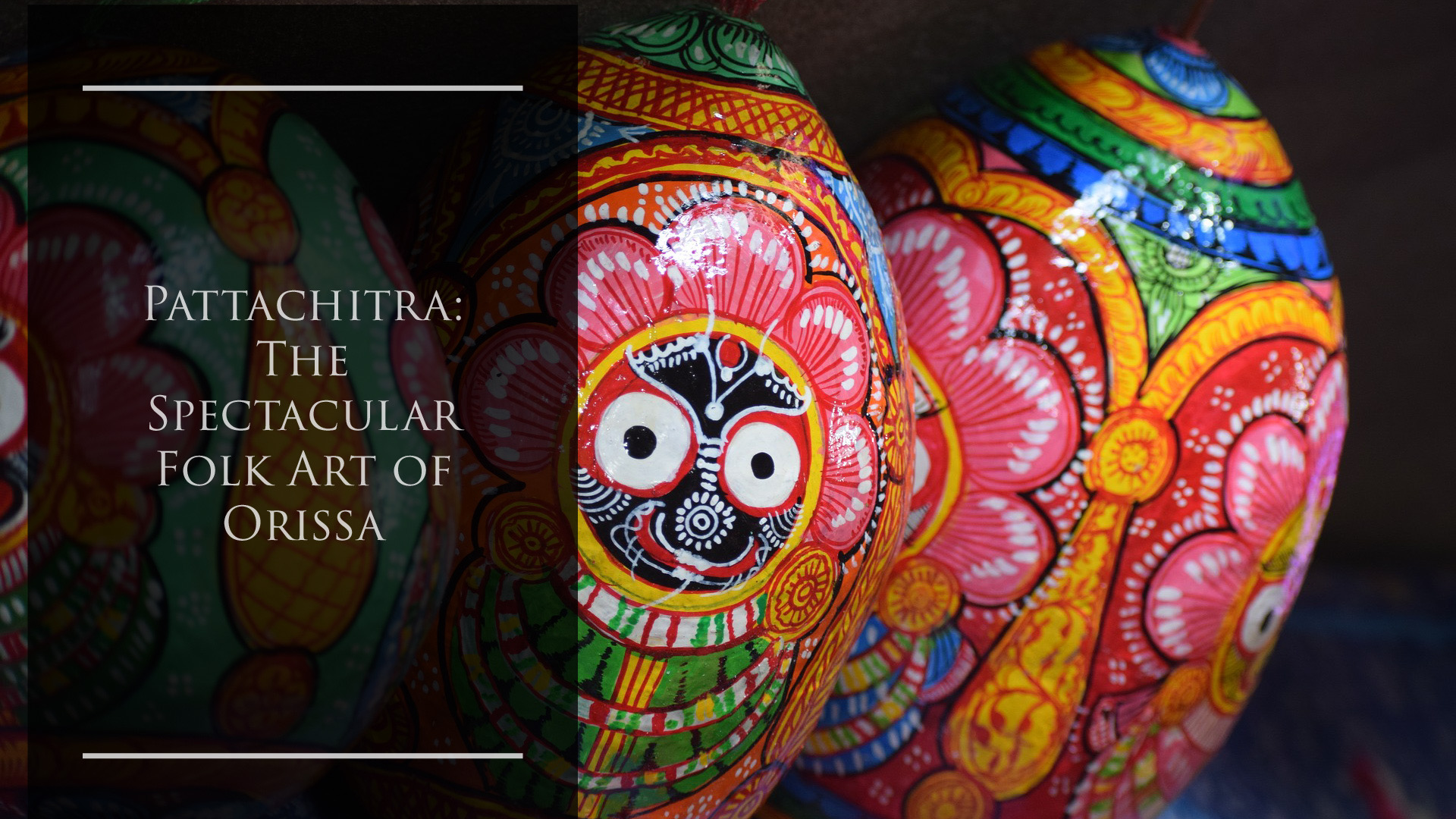While listing the most famous traditional wall arts of India, the Pattachitra art of Orissa cannot be left behind. Dating back to as early as the 12th century, the Pattachitra is regarded as the spectacular folk art of Orissa and is practiced in the state of Orissa to this day. The term “Pattachitra” comes from the combination of two words “Patta ” and “Chitra”, meaning “Cloth” and “Painting” respectively, making them the cloth paintings. They’ve gained huge importance owing to the fact that many Pattachitra Paintings are installed on the walls of the galleries of the famous Puri Shri Jagannath Temple, drawing the attention of hundreds of art lovers from across the country.
The Pattachitra is an art form that is practiced by the Chitrakar community of India, hailing from the village of Raghurajpur in the district of Puri, Orissa. This family is known to be the only one family in all of India where all its members are engaged in the works of art like Patta Paintings, wooden toys, traditional handicrafts of India, stone carvings, and so on. The entire family has a rich history of some of the finest artists in India. For the Pattachitra Paintings, these artists follow a very traditional form of preparing the canvas, which adds all the more girth to these beautiful paintings.
For the canvas, fine white cotton cloth is smeared with white stone powder and the gum of tamarind seeds, making the canvas very coarse and ready to absorb new coats of paintings on them. The colors are naturally extracted too using organic ingredients like flowers, seeds, stems, roots, creepers, and herbs.
What are typical Pattachitra Paintings composed of?
The Pattachitra Paintings are predominantly icon art, meaning they are the paintings of the local deities of the Odisha people. Some of the most common themes for these paintings are The Krishna Lila (the depiction of Lord Krishna’s childhood pastimes), The Badhia (the depiction of the famous Shri Jagannatha Temple at Orissa), The Panchamukhi Ganesha (the depiction of the Lord Ganesha as a five-headed deity) and the Dashavatara (the depiction of the ten incarnations of Lord Vishnu). Other than these themes, the general themes cover the lifestyle of the people who lived in the state of Odisha, their cultures and traditions, their local flora and fauna, their local deities, and so on.
The tradition has it that the deities of the famous Puri Shri Jagannatha Temple take a bath with 108 pots of cold water to beat the summer heat and are supposedly known to fall sick for the next two weeks, allowing the Pattachitra Artists to come together and paint these deities on their traditional “pattas” so that their people can pay their respects to these deities. This tradition is being carried on to date and people follow it as a general practice even today.
Pattachitra Paintings that started off as a traditional Indian wall art form, today have taken to canvas albeit the fact that the artists still follow a very strict discipline with regards to rules and regulations. All Pattachitra Paintings are floral borders and the artists strive to use naturally occurring colors to a great extent. The elongated eyes are another detail that the Pattachitra Artists preserve as one of the most distinctive features of this painting, along with the usage of vibrant colors and geometric patterns to create beautiful wall hangings and showpieces, slowly making its way to international art galleries.






